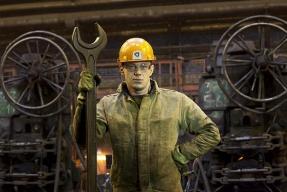Expert Advisor Optimization or How to Make an Expert Advisor More Profitable
There is always a debate about the appropriateness of application around the automation of trading strategies and the use of advisors in the Forex market.
Surely you have also come across the following statements: “All advisors lose their deposit sooner or later”! Do you think this is another nonsense of people obsessed with manual trading?
No, in fact, any advisor, without exception, if you do not interfere with its work, will sooner or later lose your deposit.
But at the same time, let's face the truth and ask ourselves a very simple question, do you know an example of at least one manual strategies, which, without any changes, could generate profit on an ongoing basis?
Most likely, you have not come across such strategies, and neither has our team. What is the point then of refusing to trade with advisors, if it is a manual strategy, that the trading expert will sooner or later lose the deposit, if you do not interfere and do not make any changes to the logic?
Actually, in this article you will learn the main reasons for the deterioration of the advisor’s performance, and you will also learn how to make your advisor more profitable than it is now.
Reasons why the advisor trades with varying success. Solution
1) The phase of the market movement has changed
It is no secret that the market moves in three directions, namely down, up and horizontally. Therefore, the movement of an asset can be divided into two phases, namely trend (when the market moves either up or down) and flat (sideways price movement).
Any advisor, one way or another, is focused on a certain type of price movement, so if at one point trend movements begin to prevail over flat ones, or vice versa, the expert will gradually drain the account.
To solve this problem, it is necessary to either change the trading asset and try to find more acceptable conditions, or carry out a deep optimization of the key variables that are responsible for the entry point.
2) Market movements have become wider or narrower than usual
Any trading asset that you take always moves only in three directions, namely either up or down, or dangles almost in place (horizontal movement).
However, the striking feature of each currency pair is the width of certain movements, as well as which market conditions prevail.

For example, EURUSD and USDJPY may prevail flat, however, the width of the flat wave for the euro will be 15 points, while for the yen it will be 35.
Consequently, if the volatility of the selected asset has changed radically, your stop orders will constantly be triggered, or the price will not reach profit. To solve this problem, it is necessary to optimize only three main parameters - the value of the stop order in points, the profit value, and the trailing value.
3) The relationship between trading session and profitability
You've probably noticed that different currency pairs display their activity in completely different ways during certain trading sessions.
This process occurs due to the fact that in different parts of the world the trading process of interested categories of traders occurs at different times of the day. Consequently, at certain times the asset can move intensively, and at other times it is in a constant sideways position.

Solving this problem is quite simple - you need to analyze the transactions and identify at what hour or on what day the expert gives the largest number of false transactions.
In order not to shovel a bunch of transactions yourself, a special MaxProfit program will help you, or if you trade with Amarkets Just use the Trade Analyzer service.
Once you find this pattern, it is enough to turn off your robot during ineffective trading times.
4) Trading on the news
News or fundamental data directly affect the trading efficiency of the advisor, since under their influence the market may behave inappropriately, the price is subject to violent surges and pullbacks, which, as a rule, can touch the stop.
To increase the efficiency of using your advisor, especially if it is built on the basis of technical analysis, it is enough to turn off the robot during the release of key statistics.
5) Incorrectly selected asset
As we have already noted, each trading asset, despite the general wave-like structure of price movement, has its own specific characteristics, ranging from swap and spread to volatility and liquidity.
If a trading asset was initially selected without taking into account its features, the advisor may lose money due to a simply high spread or insufficient volatility.
Solving this problem is quite simple - you need to test it on other trading assets or carry out a deep optimization of the basic parameters.
6) Inadequate money management
The most common mistake made by traders using advisors is the mismatch between the money management model and the size of the deposit.
So, many traders, in order to increase efficiency, greatly overestimate the position volume, which leads to inadequate drawdowns or complete loss of the deposit after a series of unsuccessful transactions.
In order to overcome this problem, it is enough to optimize your trading lot and find out its optimal value so that the drawdown is within reasonable limits and the profit is at a decent level.
In conclusion, I would like to note that there are not so many reasons why the effectiveness of an adviser decreases. Therefore, through simple optimization, as well as self-analysis, they can be easily identified and eliminated, which in the future will allow you to achieve that very desired stability.
